First of all, remember to fight/vote! Shirtless men are in an even race with Highland Warriors…
Now on to our history lesson for the night! You may recall that recently I sent a message to Athelstan urging him to tread cautiously and carefully in affairs of the heart where the Lady Judith, wife of Aethulwulf is concerned?
https://timeslipsblog.wordpress.com/2015/01/26/vikings-message-to-athelstan/
Well, tonight’s history lesson has to do with descendants of Aethulwulf. If you remember, I did mention how important his descendants are in the future rule of England. I just recently came across an interesting article and discovery about one of his descendants! It is a bit of old news but seeing as I just discovered it, some of you may also find it interesting as well?
Remains discovered in Germany confirmed as oldest confirmed British Royal, who died more than 1,000 years ago
Bones found in a German cathedral belong to the granddaughter of Saxon king Alfred the Great, experts confirmed today. Body parts excavated in Magdeburg Cathedral in 2008 are those of Saxon princess Eadgyth, who died more than 1,000 years ago. They are the oldest surviving remains of an English royal burial, according to experts at the University of Bristol who analysed the skeletal fragments to piece together a snapshot of the princess’s life.
Eadgyth was married off to Otto I, the Great, in AD 929 by her half brother Athelstan, who was the first king to rule all of England. As wife of the king of Saxony, she lived most of her married life in Magdeburg, capital of Saxony-Anhalt, and had at least two children. Eadgyth died in AD 946 aged about 36 and was buried in the monastery of St Maurice in Switzerland. Her bones were moved at least three times before being finally interred in an elaborate tomb in Magdeburg Cathedral in 1510.

Two years ago, German archaeologists opened the tomb, expecting it to be empty. To their surprise, they found it contained a lead box bearing the inscription ‘The remains of Queen Eadgyth are in this sarcophagus’. When they opened the coffin they discovered bone fragments wrapped in silk. It is thought some of the missing body parts, including hands and feet and much of the skull, were probably taken by medieval relic hunters. An analysis of the remains by Professor Kurt Alt at the University of Mainz established they were those of a female who died aged between 30 and 40. Professor Alt also found evidence that the woman was a frequent horse rider and ate a high protein diet with large amounts of fish, which suggested she had enjoyed an aristocratic lifestyle.
I find the article interesting from a scientific point of view even though I do question the need for opening up a coffin to examine the remains in order to prove exactly who the person was. If there was a sound reason for a more thorough and in depth examination, it might sit better with me? An example of a more sound reason to prove who ancient remains are would be in a case such as the controversy over skeletal remains which might or might not be connected to mystery of the Princes of the Tower. But, that is another story for another time!
Read more: http://www.dailymail.co.uk/news/article-1287283/Remains-Saxon-princess-Eadgyth-oldest-British-Royal-discovered-Germany.html#ixzz3Qg4fjq4q
Follow us: @MailOnline on Twitter | DailyMail on Facebook
I know you are thinking, Ohhh well an odd and interesting bit of information- but what does she have to do with Aethulwulf?
Well, if you follow along with my very brief genealogy lesson, you will see how she is related to our Aethelwulf… You know, the one who is turning more and more to a life of pious devotion to God? Oh, by the way, he passes this devotion down to future generations as well!
Eadgyth, or Edith was born to the reigning English king Edward the Elder by his second wife, Ælfflæd, and hence was granddaughter of Alfred the Great. Nothing is known of her until in order to seal an alliance between two Saxon kingdoms, her half-brother, King Athelstan of England, sent two of his sisters (Eadgyth and Eadgifu of Wessex) to Germany, instructing the Duke of Saxony (later Otto I, Holy Roman Emperor) to choose whichever one pleased him best. Otto chose Edith and married her in 930. The remaining sister Algiva or Adiva was married to a “king near the Jupiter mountains” (the Alps). The precise identity of the husband of this sister is debated.
In 936 King Henry I of Germany died and his eldest son, Eadgyth’s husband, was crowned at Aachen as King Otto I. There is a surviving report of the ceremony by Widukind of Corvey which makes no mention of his wife having been crowned at this point, but according to Thietmar of Merseburg‘s chronicle Eadgyth was nevertheless anointed as queen, albeit in a separate ceremony. As queen, Eadgyth undertook the usual state duties of “First lady”: when she turns up in the records it is generally in connection with gifts to the state’s favoured monasteries or memorials to holy women and saints. In this respect she seems to have been more diligent than her now widowed and subsequently sainted mother-in-law Queen Matilda whose own charitable activities only achieve a single recorded mention from the period of Eadgyth’s time as queen. There was probably rivalry between the Benedictine Monastery of St Maurice founded at Magdeburg by Otto and Eadgyth in 937, a year after coming to the throne and Matilda’s foundation at Quedlinburg Abbey, intended by her as a memorial to her husband, the late King Henry I.
Eadgyth accompanied her husband on his travels, though not during battles. She spent the hostilities of 939 at Lorsch Abbey
Like her brother, Athelstan, Edith was devoted to the cult of Saint Oswald and was instrumental in introducing this cult into Germany after her marriage to the emperor. Her lasting influence may have caused certain monasteries and churches in Saxony to be dedicated to this saint.
Eadgyth’s death at a relatively young age, in her early thirties, was unexpected.
http://en.wikipedia.org/wiki/Eadgyth
Eadgyth was the granddaughter of one Alfred the Great, who was the son of Aethelwulf!
Alfred was born in the village of Wanating, now Wantage, Oxfordshire. He was the youngest son of King Æthelwulf of Wessex, by his first wife,Osburh.
In 853, at the age of four , Alfred is said to have been sent to Rome where, according to the Anglo-Saxon Chronicle, he was confirmed by Pope Leo IV who “anointed him as king”. Victorian writers later interpreted this as an anticipatory coronation in preparation for his ultimate succession to the throne of Wessex. However, his succession could not have been foreseen at the time, as Alfred had three living elder brothers. A letter of Leo IV shows that Alfred was made a “consul“; a misinterpretation of this investiture, deliberate or accidental, could explain later confusion. It may also be based on Alfred’s later having accompanied his father on a pilgrimage to Rome where he spent some time at the court of Charles the Bald, King of the Franks, around 854–855.
On their return from Rome in 856, Æthelwulf was deposed by his son Æthelbald. With civil war looming, the magnates of the realm met in council to hammer out a compromise. Æthelbald would retain the western shires (i.e., traditional Wessex), and Æthelwulf would rule in the east.
When King Æthelwulf died in 858, Wessex was ruled by three of Alfred’s brothers in succession, Æthelbald, Æthelberht and Æthelred.
Bishop Asser tells the story of how as a child Alfred won a prize of a volume of poetry in Saxon, offered by his mother to the first of her children able to memorize it. Legend also has it that the young Alfred spent time in Ireland seeking healing. Alfred was troubled by health problems throughout his life. It is thought that he may have suffered from Crohn’s disease. Statues of Alfred in Winchester and nev Wantage portray him as a great warrior. Evidence suggests he was not physically strong, and though not lacking in courage, he was noted more for his intellect than a warlike character.
During the short reigns of the older two of his three elder brothers, Æthelbald of Wessex and Æthelberht of Wessex, Alfred is not mentioned. An army of Danes which the Anglo-Saxon Chronicle described as the Great Heathen Army had landed in East Anglia with the intent of conquering the four kingdoms that constituted Anglo-Saxon England in 865. It was with the backdrop of a rampaging Viking army that Alfred’s public life began, with the accession of his third brother, Æthelred of Wessex, in 866.
It is during this period that Bishop Asser applied to Alfred the unique title of “secundarius”, which may indicate a position akin to that of the Celtic tanist, a recognised successor closely associated with the reigning monarch. It is possible that this arrangement was sanctioned by Alfred’s father, or by the Witan, to guard against the danger of a disputed succession should Æthelred fall in battle. The arrangement of crowning a successor as royal prince and military commander is well known among other Germanic tribes, such as the Swedes and Franks, to whom the Anglo-Saxons were closely related.
Fighting the Viking invasion
In 868, Alfred is recorded as fighting beside Æthelred in an unsuccessful attempt to keep the Great Heathen Army led by Ivar the Boneless out of the adjoining Kingdom of Mercia. At the end of 870, the Danes arrived in his homeland. The year which followed has been called “Alfred’s year of battles”. Nine engagements were fought with varying outcomes, though the place and date of two of these battles have not been recorded. Yes, if that Viking Heathen name sound familiar, you would be correct in having heard of it in our Viking Saga! Ivar the Boneless is one of the sons of Ragnar and Aslaug… You know, that poor infant that Aslaug warned Ragnar would be cursed, and the one that she as his Mother could not and would not leave to die.
In Berkshire, a successful skirmish at the Battle of Englefield on 31 December 870 was followed by a severe defeat at the siege and Battle of Reading by Ivar’s brother Halfdan Ragnarsson on 5 January 871. Four days later, the Anglo-Saxons won a brilliant victory at the Battle of Ashdown on the Berkshire Downs, possibly near Compton or Aldworth. Alfred is particularly credited with the success of this latter battle.
Later that month, on 22 January, the English were defeated at the Battle of Basing. They were defeated again on 22 March at the Battle of Merton (perhaps Marden in Wiltshire or Martin in Dorset). Æthelred died shortly afterwards on 23 April.
Alfred eventually went on to defeat the Dane Vikings and unite much of England under one rule.
http://en.wikipedia.org/wiki/Alfred_the_Great
Seeing as Ivar the boneless was mentioned in connection with Alfred’s history, I feel it important to include a bit of history on him as he is one of Ragnar’s sons!
http://en.wikipedia.org/wiki/Ivar_the_Boneless
Ivar was one of the leaders of the Great Heathen Army which invaded the Anglo-Saxon kingdom of East Anglia in 865. According to the Norse sagas this invasion was organised by the sons of Ragnar Lodbrok, of whom Ivar was one, to wreak revenge against Ælla of Northumbria. Ælla had supposedly executed Ragnar in 865 by throwing him in a snake pit, but the historicity of this explanation is unknown. The invaders are usually identified as Danes, although the tenth-century churchman Asser stated in Latin that the invaders came “de Danubia”, which translates into English as “from the Danube“, the fact that the Danube is located in what was known in Latin as Dacia suggests that Asser may have actually intended Dania, a Latin term for Denmark.
The Great Heathen Army landed in East Anglia in the autumn of 865, where they remained over the winter and secured horses for their later efforts. The following year the army headed north and invaded Northumbria, which was in the midst of a civil war between Ælla and Osberht, warring claimants for the Northumbrian throne. Late in 866 the army conquered the rich Northumbrian settlement of York. The following year Ælla and Osberht put their differences aside, and teamed up to retake the town. The attempt was a disaster and both of them lost their lives. According to legend, Ælla was captured alive, but was executed by Ivar and his brothers using the blood eagle, a method of execution whereby the ribcage is opened from behind and the lungs are pulled out, forming a wing-like shape. With no obvious leader, Northumbrian resistance was crushed and the Danes installed a puppet-king, Ecgberht, to rule in their name and collect taxes for their army.
Later in the year the Army moved south and invaded the kingdom of Mercia, capturing the town of Nottingham, where they spent the winter. The Mercian king, Burghred, responded by allying with the West Saxon king Æthelred, and with a combined force they laid siege to the town. The Anglo-Saxons were unable to recapture the city, but a truce was agreed whereby the Danes would withdraw to York. The Great Heathen Army remained in York for over a year, gathering its strength for further assaults.
The Danes returned to East Anglia in 869, this time intent on conquest. They seized Thetford, with the intention of remaining there over winter, but they were confronted by an East Anglian army.[13] The East Anglian army was defeated and their king, Edmund, was slain. Medieval tradition identifies Edmund as a martyr who refused the Danes’ demand to renounce Christ, and was killed for his steadfast Christianity. Ivar and Ubba are identified as the commanders of the Danes, and the killers of Edmund. How true the later accounts of Edmund’s death are is unknown, but it has been suggested that his capture and execution is not an unlikely thing to have happened.
Following the conquest of East Anglia Ivar apparently left the Great Heathen Army – his name disappears from English records after 870.
According to the saga of Ragnar Lodbrok, Ivar Boneless was the eldest son of Ragnar and Aslaug. It is said he was fair, big, strong, and one of the wisest men who had ever lived. He was consequently the advisor of his brothers Björn Ironside, Sigurd Snake-in-the-Eye, and Hvitserk.
The story has it that when king Ælla of Northumbria had murdered their father, by throwing Ragnar into a snake-pit, Ivar’s brothers tried to avenge their father but were beaten. Ivar then went to king Ælla and sought reconciliation. He only asked for as much land as he could cover with an ox’s hide and swore never to wage war against Ælla. Then Ivar cut the ox’s hide into so fine strands that he could envelope a large fortress (in an older saga it was York and according to a younger saga it was London) which he could take as his own. (Compare the similar legendary ploy of Dido.)
Right after the messenger of king Ælla delivered the message that Ragnar had died to Ivar the Boneless, Bjorn Ironside, Sigurd Snake-eye, and Hvitserk, Ivar said: “I will not take part in or gather men for that, because Ragnar met with the fate I anticipated. His cause was bad; he had no reason to fight against King Ella, and it has often happened that when a man wanted to be overbearing and wrong others it has been the worst for him; I will take wergild from King Ella if he will give it”.[24]
As Ivar was the most generous of men, he attracted a great many warriors, whom he subsequently kept from Ælla when Ælla was attacked again by Ivar’s brothers. Ælla was captured, and when the brothers were to decide how to give Ælla his just punishment, Ivar suggested that they carve the “blood eagle” on his back. According to popular belief, this meant that Ælla’s back was cut open, the ribs pulled from his spine, and his lungs pulled out to form “wings.”
In Ragnar Lodbrok’s saga, there is an interesting prequel to the Battle of Hastings: it is told that before Ivar died in England, he ordered that his body was to be buried in a mound on the English Shore, saying that so long as his bones guarded that section of the coast, no enemy could invade there successfully. This prophecy held true, says the saga, until “when Vilhjalm bastard (William the Conqueror) came ashore[,] he went [to the burial site] and broke Ivar’s mound and saw that [Ivar’s] body had not decayed. Then [Vilhjalm] had a large pyre made [upon which Ivar’s body was] burned… Thereupon, Vilhjalm proceeded with the landing invasion and achieved] the victory. What is interesting about this particular legend is if you look at the ancestry of William the Conqueror, you find that he was descended from the Viking, Rollo… Ivar sets forth a prophecy or curse that no “enemy” would invade that coast successfully, but if William’s ancestry is taken into account, he would not necessarily be an enemy, would he? But, more of a distant descendant!
Explanation for Ivar’s nickname:
There is some disagreement as to the meaning of Ivar’s epithet “the Boneless” (inn Beinlausi) in the sagas. Some have suggested it was a euphemism for impotence or even a snake metaphor (he had a brother named Snake-in-the-Eye). It may have referred to an incredible physical flexibility; Ivar was a renowned warrior, and perhaps this limberness gave rise to the popular notion that he was “boneless”. The poem “Háttalykill inn forni” describes Ivar as being “without any bones at all”.
Alternatively, the English word “bone” is cognate with the German word “Bein”, meaning “leg”. Scandinavian sources mention Ivar the Boneless as being borne on a shield by his warriors. Some have speculated that this was because he could not walk and perhaps his epithet simply meant “legless”—perhaps literally or perhaps simply because he was lame. Other sources from this period, however, mention chieftains being carried on the shields of enemies after victory, not because of any infirmity.
John Haywood put forth another hypothesis from the origin of Ivar’s nickname: the nickname, in use by the 1140s, may be derived from a 9th-century story about a sacrilegious Viking whose bones shriveled and caused his death after he plundered the monastery of Saint- Germain near Paris.
Genetic disease
Still another interpretation of the nickname involves Scandinavian sources as describing a condition that is sometimes understood as similar to a form of osteogenesis imperfecta. The disease is more commonly known as “brittle bone disease.” In 1949, the Dane Knud Seedorf wrote:
Of historical personages the author knows of only one of whom we have a vague suspicion that he suffered from osteogenesis imperfecta, namely Ivar Benløs, eldest son of the Danish legendary king Regnar Lodbrog. He is reported to have had legs as soft as cartilage (‘he lacked bones’), so that he was unable to walk and had to be carried about on a shield.
There are less extreme forms of this disease where the person afflicted lacks the use of his or her legs but is otherwise unaffected, as may have been the case for Ivar the Boneless. In 2003 Nabil Shaban, a disability rights advocate with osteogenesis imperfecta, made the documentary The Strangest Viking for Channel 4‘s Secret History, in which he explored the possibility that Ivar the Boneless may have had the same condition as himself. It also demonstrated that someone with the condition was quite capable of using a longbow, such that Ivar could have taken part in battle, as Viking society would have expected a leader to do.
That concludes our history lesson for the night, from Aethelwulf and his descendants to Ivar the Boneless and how they’re all a part of early Saxon history!



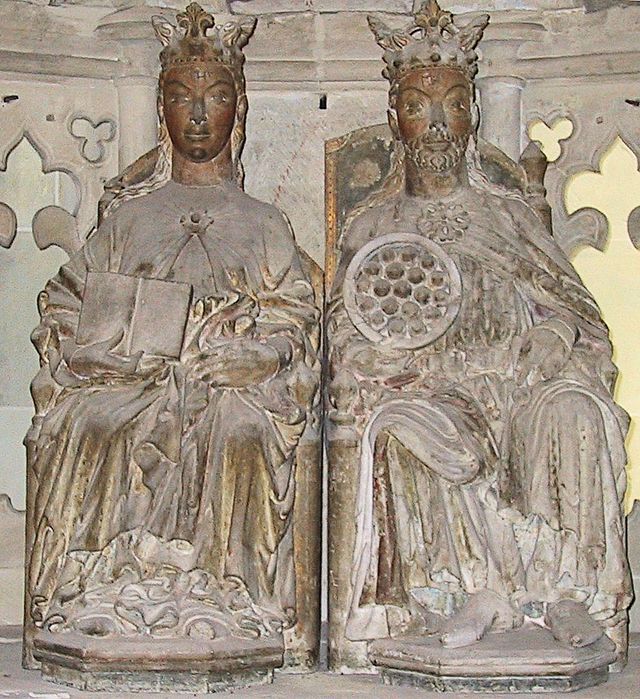
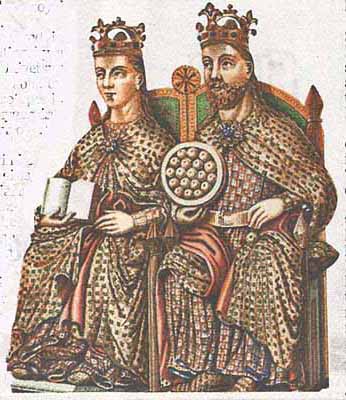




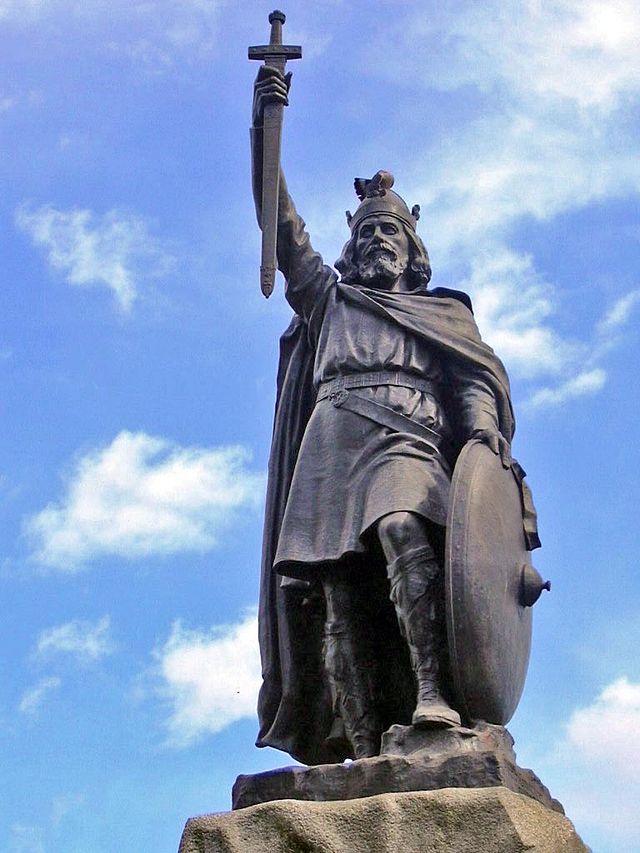
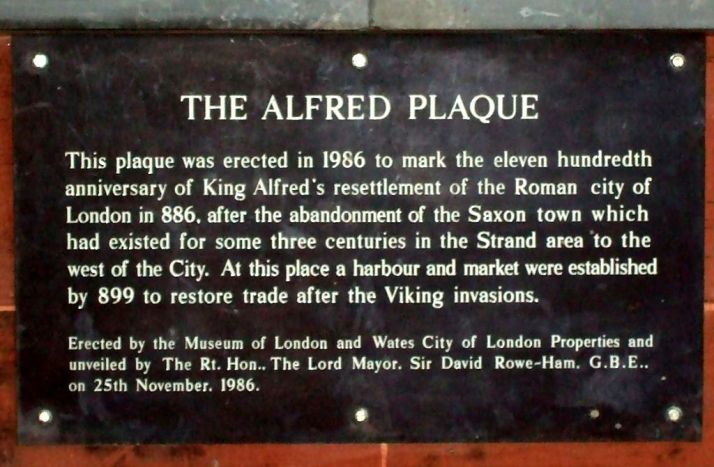
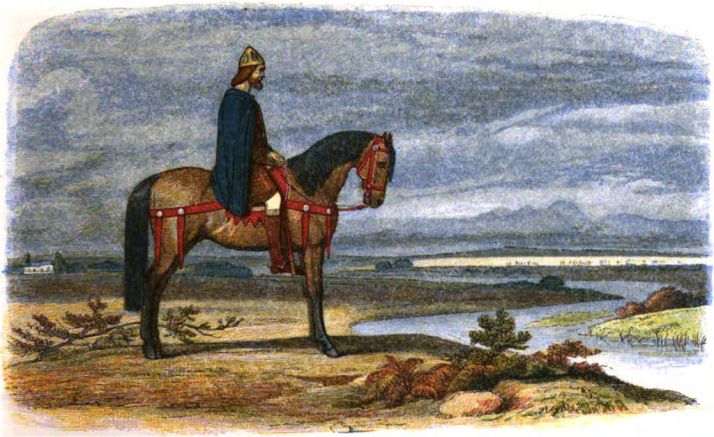

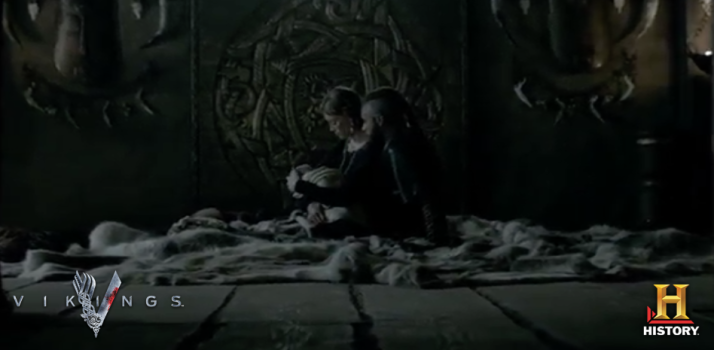


I simply could not go away your website before suggesting that I actually enjoyed the standard
info an individual provide for your guests? Is going to be again often in order to check up on
new posts
LikeLike
Thanks so much for sharing your valuable historical expertise. Aside from the history you presented, the first photo in this article from the Vikings TV show seems to me a good indication of Ragnar’s nickname Lodbrok (hairy breeches). As I’m sure you know, his actual surname was Sigurdsson (son of Sigurd, but not the same Sigurd as Aslaug’s father). I find myself to be a wearer of hairy breeches quite often because my lap is a home for cats. Ragnar’s was apparently the same for goats, if Hirst has his history correct. Since he was a farmer, it seems accurate.
LikeLiked by 1 person
Thanks much Carla, I’m glad you enjoyed the article! Yes, as to Ragnar’s true surname… I use Lodbrok because that it what Hirst has chosen to use for him. I can only assume that Hirst went with the nickname became that’s the more familiar name to those reading some of the sagas. I believe that one saga mentions how he got the name because of pants that he wore to fend off a group of snakes- not the ones in the snake pit! One legend tells of how he ended up with wife, Þóra Borgarhjǫrtr… Supposedly she kept snakes as pets and they threatened to over run the village. Her Father offered her as reward if Ragnar could rid the village of the snakes! He coated his pants in pitch or tar and other materials so the snakes couldn’t bite his legs then proceeded to drive the snakes out of the village. As a result, he became known as hairy or scratchy britches.
LikeLiked by 1 person
In the t.v. show. Ecbert is obsessed with reading the Latin. HE’s certain the key is in the Latin text. I am not sure that’s Bede’s library that he has in the show. Back in the day, I think they believed that only monks could read the Latin. Since Athelstan didn’t want to stay with Ecbert, perhaps he thought it was a genetic talent that would be passed to Alfred. (at least in the t.v. story)
Here’s what is even weirder about the William the Conqueror story. In the legend he has the court musician sing the song of Roland at the battle of Hastings. Roland was Charlemagne’s nephew. I the legend Roland is defeated in the Pyrenees mountains by the Saracens. (in real life it was the Basques) Charlemagne avenges Roland. We saw Roland’s horn in the t.v. series. It’s in the Kings chambers, when Gisla asks him to call for aide she looks at the horn on the table. The legend says that blowing the horn would summon Charlemagne.
Harald Hardrada is killed by Harold the Saxon. Harald Hardrada is considered the last Viking. So then William avenges him by defeating Harald the Saxon..
We saw in Season 3, the Oriflamme. The Oriflamme, as you probably know, was carried on the Spear of Destiny. In the legend whoever had the spear of Longinus ruled the world. It was supposed to be the spear that stabbed Christ. In the movie the Passion of the Christ, you see Longinus stab Jesus, and the water flows out and hits him, and he kneels. He’s the first Knight. The blood flowing from the side was seen as the waters of baptism flowing out of Jesus, as the sacraments flow out of his body the church. The blood hits him in the eyes and he can see. IN reality, the Frankish royal family probably had the ceremonial spear already.
So the Frankish royal family had the spear, the horn, the iron Crown of Lombardy, Otto’s crown. There was also the cloak of Clovis. IT was blue with golden lilies. That story is that ST. Mary appeared to Clovis and told him where to cross the river by the golden lilies. The Golden liles were then forever on his cloak.
LikeLike
Hitler believed the Legend. He took the spear, the crown of the emperor Otto, and the cloak of Frederick 2 Hohenstaufen. Someone hid the artifacts under a school house. One of the Monuments men found them after interrogating some soldiers. https://www.youtube.com/watch?v=HR-jEnIPzaw It was feared that had them thrown in the lake.
LikeLiked by 1 person
A friend of mine said she read a sneak peak of season IV. Not sure where she read it. She said, Ragnar is going to have to abdicate in favor of Bjorn. Ivor will object and he will become King. Bjorn will have to leave.
When they were in Paris they captured a Chinese woman. (Ragnar’s 3rd wife??? we know he had 3)
Okay this is just a guess, and I am not doing so good on that. Ragnar said there were NO witnesses to the destruction of the Viking settlement. Well there is one, Aethulwulf. I am thinking that Ragnar frames Rollo for the destruction of the Viking settlement. Maybe frame on Rollo will go something like this, queen K slapped Rollo and he was jealous because she then slept with Ragnar. So Rollo and Aethulwulf collaborate to destroy the Viking settlement. Rollo promised to help Aethulwulf take out Eckbert in exchange for Gisla. (I am thinking they are related) Eckbert will frame/blame Aethulwulf for acting alone in destroying the settlement, and try to kill him to SHUT HIM UP! I think Aethulwulf will escape with Alfred and go to Rome and Frankia.
Floki goes along with frame job to save his life….
Again just a guess, the Normandy Vikings will try to talk to the other Vikings and try and give them land which is what they wanted was to farm. The Kattegat Vikings will answer with a volley of Arrows. The Normandy Vikings will not know what the heck is going on and tell Rollo. So he really will have to fight off Ragnar. Aethulwulf shows up, and tells them about the frame job Eckbert put on him.
Somehow, the other Vikings on Kattegat find out about the Frame job and their loved ones left behind in Normandy being cut off and attacked. The destruction of the Viking settlement was really Ragnar’s fault. They are PISSED. They force Ragnar to abdicate in favor of Bjorn. Ivar does a frame job on Bjorn and says he was in on the frame job on the Normandy Vikings. Ragnar, Floki and Bjorn have to leave town, they go to the East with the Chinese woman…
LikeLike
The Smear campaign I believe is coming. Once the “bad” seed leaves the reservation, the Narcissist will do anything to destroy him emotionally. Eckbert tried to do it already. Perhaps he believes he has to be gotten rid of because he was already on to the game. http://echorecovery.blogspot.com/2014/01/the-narcissists-smear-campaign.html Believe it or not, once a person starts to get better, the family tries to drag them back into that mess. That self flagellation picture says it all, if only I could do or be enough, it would all be okay, it’s all my fault. http://www.facesandvoicesofrecovery.org/blog/2015/05/top-five-ways-sabotage-your-loved-one%E2%80%99s-recovery
LikeLiked by 1 person